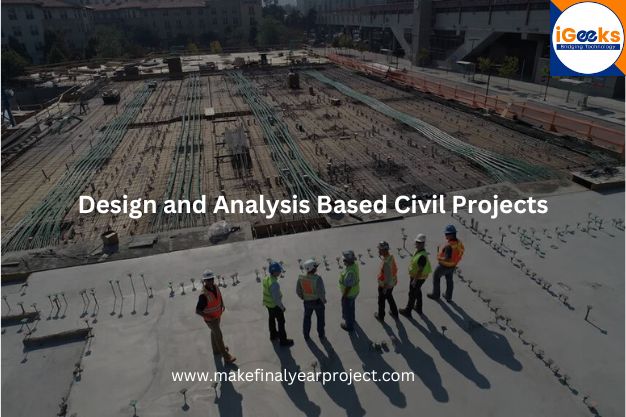By iGeeks Technologies:
Embarking on a research journey often involves the meticulous analysis of data, both qualitative and quantitative. In the realm of academia, particularly at the PhD level, the stakes are high, and precision in statistical analysis is paramount. At iGeeks Technologies, our team of experienced statisticians is here to provide PhD statistics help, focusing on the utilization of SPSS (Statistical Package for the Social Sciences). Let’s delve into the intricacies of analyzing qualitative and quantitative data for your research endeavors.
Design and Analysis Based Civil Projects
Civil engineering projects often require a combination of innovative design and rigorous analysis to ensure their success. Here are ten examples of design and analysis based civil projects:
1. Bridge Design and Analysis
Designing and analyzing bridges require considerations for various factors such as load capacity, material strength, and environmental conditions. Advanced software like SAP2000 and StaadPro are used for structural analysis and design. Engineers must also consider factors such as traffic volume, soil conditions, and seismic activity when designing bridges to ensure their safety and longevity.
2. Structural Analysis of High-rise Buildings
High-rise buildings require meticulous structural analysis to ensure they can withstand wind loads, seismic forces, and other environmental factors. Finite Element Analysis (FEA) software is often used for this purpose. Engineers must consider factors such as building height, occupancy, and location when designing high-rise buildings to ensure they meet safety and regulatory requirements.
3. Foundation Design for Large Structures
The design of foundations for large structures such as skyscrapers or bridges requires careful analysis of soil conditions and structural loads. Software like SAFE and PLAXIS are used for foundation design and analysis. Engineers must consider factors such as soil type, groundwater level, and building weight when designing foundations to ensure they can support the structure safely and effectively.
4. Traffic Flow Analysis and Road Design
Designing efficient road networks involves analyzing traffic flow patterns and designing roads to accommodate varying traffic loads. Software like VISSIM and TransCAD are used for traffic flow analysis and road design. Engineers must consider factors such as traffic volume, vehicle types, and road geometry when designing roads to ensure they are safe and efficient for all users.
5. Water Supply and Distribution System Design
Designing water supply and distribution systems involves analyzing water flow rates, pipe materials, and pressure requirements. Software like EPANET is used for hydraulic analysis and design of water distribution systems. Engineers must consider factors such as population growth, water quality, and environmental impact when designing water supply systems to ensure they meet the needs of the community.
6. Wastewater Treatment Plant Design
Designing wastewater treatment plants requires analysis of treatment processes, flow rates, and environmental regulations. Software like BioWin is used for process modeling and design of wastewater treatment plants. Engineers must consider factors such as population density, industrial activity, and environmental sensitivity when designing wastewater treatment plants to ensure they are effective and environmentally sustainable.
7. Seismic Analysis and Design of Structures
Designing structures in seismic zones requires analysis of seismic forces and designing structures to resist these forces. Software like ETABS and OpenSees are used for seismic analysis and design. Engineers must consider factors such as soil type, building height, and local seismic activity when designing structures in seismic zones to ensure they are safe and resilient to earthquakes.
8. Environmental Impact Assessment
Before undertaking any civil project, an environmental impact assessment (EIA) is conducted to assess the project’s potential environmental impacts. Various tools and methodologies are used for EIA, including Geographic Information Systems (GIS). Engineers must consider factors such as air and water quality, wildlife habitat, and cultural heritage when conducting an EIA to ensure the project minimizes its impact on the environment.
9. Geotechnical Investigation and Analysis
Geotechnical investigations are conducted to assess soil conditions and design foundations for structures. Software like GeoStudio and PLAXIS are used for geotechnical analysis and design. Engineers must consider factors such as soil strength, stability, and settlement when designing foundations to ensure they are safe and durable.
10. Coastal Engineering and Shoreline Protection
Designing coastal structures and shoreline protection measures require analysis of wave forces, tidal currents, and coastal erosion. Software like MIKE 21 and SWAN are used for coastal engineering analysis and design. Engineers must consider factors such as sea level rise, storm surges, and beach erosion when designing coastal structures to ensure they are resilient to changing coastal conditions.
These projects showcase the diverse range of design and analysis tasks involved in civil engineering projects, highlighting the importance of using advanced software and methodologies to ensure the safety, efficiency, and sustainability of civil infrastructure.











